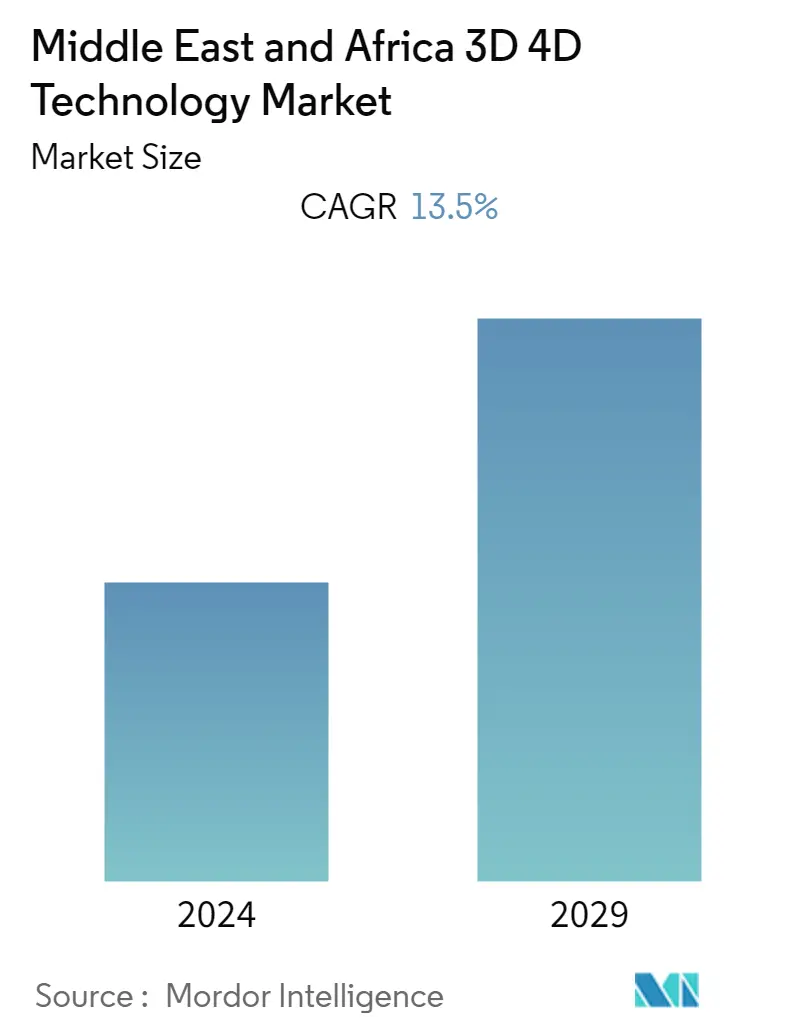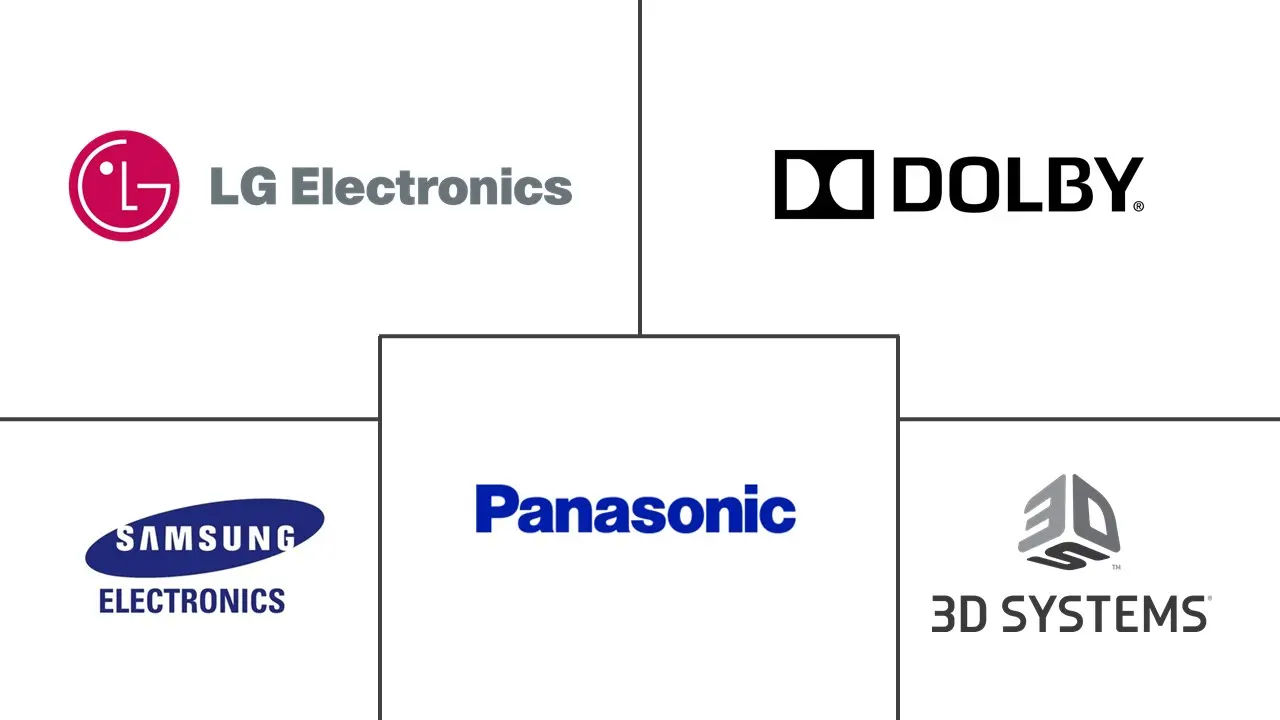Market Size of Middle East and Africa 3D 4D Technology Industry

| Study Period | 2019 - 2029 |
| Base Year For Estimation | 2023 |
| Forecast Data Period | 2024 - 2029 |
| Historical Data Period | 2019 - 2022 |
| CAGR | 13.50 % |
| Market Concentration | Medium |
Major Players
*Disclaimer: Major Players sorted in no particular order |
Need a report that reflects how COVID-19 has impacted this market and its growth?
MEA 3D 4D Technology Market Analysis
The Middle East and Africa 3D 4D Market is expected to reach a CAGR of 13.5% during the forecast period. Currently, 3D printing technology has come in handy for the medical sector. COVID-19 patients need medical devices, such as ventilators, to keep breathing, putting enormous pressure on hospitals that are currently overflowing with demand. Keeping this in mind, several vendors have developed 3D printer ventilators and valves, which would reduce the shortage of machines needed to treat sick patients.
- For the past year, researchers have incorporated the post-processing step in the 4D printing process itself, and the materials used are expanded to shape memory polymers, liquid crystal elastomers, and hydrogels.
- These materials can be used in cases where maintenance is difficult, such as in biomedical engineering, where stents can be manufactured using this technology. Advanced healthcare has the maximum application since printing organs and tissues for the human body using 3D printing is already prevalent; hence, much more can be achieved using 4D printing.
- As 3D printing continues to be paired with robots, whether in making parts for them or in creating robots that can operate 3D printers, the next level in soft robotics can be attained with 4D printing. Soft robotics utilize certain soft materials, such as elastomers, which act as the interaction interface between robots and their environment. These soft materials allow for a gentle interaction with fragile objects and allow for a better tolerance toward damaging forces when compared to traditional robotics.
- The UAE government has also been actively supporting the creation of advanced manufacturing and design hubs. An initiative, known as Dubai 3D Printing Strategy, was recently launched to promote the status of the United Arab Emirates, specifically Dubai, as the leading hub of 3D printing technology by the year 2030.
- The Suzhou building, a five-story apartment complex, is taller; the 31-foot-tall Dubai building is larger by volume at 6,900 square feet. Its purpose is a bit less exciting than its construction; it will be used for administrative work by the Dubai Municipality. Also, according to the Dubai Future Foundation, Dubai plans to 3D print 25% of every new building by 2025. Among the many sectors, the initial focus is on the construction sector. This exhibits the growth of 3D reconstruction in the coming future.
